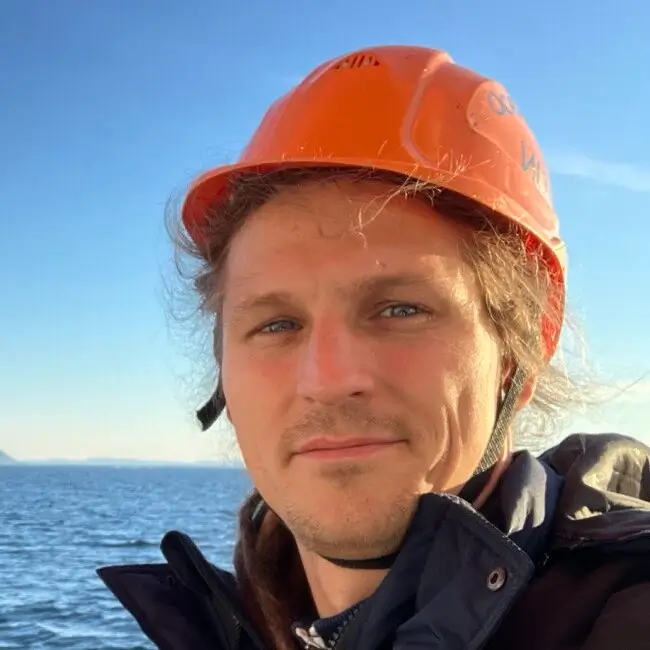
Bennett Island’s rocky outcrops
Today we’ll discuss Bennett Island—a small island named after the American oligarch Bennett and located in the Russian Arctic north of the New Siberian Islands. How could this happen, and what secrets does the island hold today?
The main problem in navigating the Arctic Ocean is ice. For centuries, the Arctic explorers have been captivated by the idea of reaching the North Pole through pathways melted by warm Atlantic and Pacific streams. The first attempts to reach the North Pole from the Atlantic Ocean, by finding the Gulf Stream’s far northward continuation, were made by the British, French, and Dutch as early as the 17th century. This route was actively searched for in the 18th and 19th centuries, but nothing was ever found.1
Much later, people explored the northern Pacific Ocean, Kamchatka, Chukotka, and Alaska. Having discovered that warm Pacific waters pass through the Bering Strait and warm the Chukchi Sea, the same story of searching for an easy, ice-free route to the pole repeated itself in this part of the Arctic. This time, the Americans became the leaders in the search for a passage far to the north.2 But where to get funding for expensive sea expeditions?

View of the island, NASA, USGS
Expeditions Sponsored By Bennett
Funding for expeditions could be obtained from oligarchs, for example, from media moguls. The New York Herald had the highest circulation in the world at the time. Its owner, James Gordon Bennett, was a fan of yacht racing and various adventures. He skillfully exploited the public’s interest in exotic countries and travel. Henry Stanley, a New York Herald correspondent in Africa, was sent by Bennett to search for the missing explorer Livingstone in Central Africa. Livingstone was found, Stanley’s correspondent became world-famous, and Bennett earned a fortune from his newspaper reports.
A few years later, Bennett sponsored an expedition to the Arctic to search for Franklin’s lost expedition—130 people on two ships had disappeared without a trace among the islands of the Canadian Arctic Archipelago! His rescue party returned empty-handed; no trace of Franklin’s expedition was found.
Two years later, Bennett mounted a second Arctic expedition under the command of the American, De Long, this time to rescue Nordenskiöld’s expedition, which was attempting to sail from the Atlantic Ocean along the Siberian coast to the Pacific Ocean, that is, to navigate the Northern Sea Route. No one had ever succeeded, and Nordenskiöld was the first to do so! Ultimately, there was no need to search and rescue him; he returned himself, and with such a triumph! Even the meeting between the two polar explorers, De Long and Nordenskiöld (which could have been covered as enthusiastically as the meeting between Stanley and Livingstone), was aborted—their ships missed each other by a week in the Bering Strait.
The situation changed: De Long’s expedition set out to search for a passage to the North Pole. The warm surface current of the Pacific waters disappeared already in the middle of the Chukchi Sea, and, instead of navigating through open water, De Long’s vessel froze in the ice. Then followed almost two years of drifting in the ice: the vessel was carried northeast, not to the North Pole, but to The Siberian Sea. Three small islands were discovered there, named after Bennett himself, his sister Jeanette, and his mother Henrietta. Ultimately, De Long’s ship was crushed by ice and sank, and the polar explorers set off south to the mainland by sled and boat. Only 13 of the 32 expedition members made it through the four-month voyage to the settlements in the Lena Delta; the rest perished, including De Long.

A panoramic view of the Bennett Island. Source: Wikimedia Commons, Ansgar Walk, CC BY-SA 3.0
Thus, media mogul Bennett once again made money by covering travels and expeditions. The polar explorers failed to find an easy route to the pole and ended up in deadly conditions. And in Russia, the De Long Archipelago, with the islands of Bennett, Jeanette, and Henrietta, was born. American attempts to reach the North Pole continued, and with considerable media attention. But only the Bolsheviks conquered the North Pole.
In Search Of Land In The Arctic
This small island is, in fact, the famous Sannikov Land. For centuries, people could not reach the ice-covered central part of the Arctic Ocean, either in winter or summer.3 Throughout history, this has forced people to speculate, perhaps there were large islands or even an entire continent there?4

The second edition of Gerard Mercator’s map of the North Pole
Surprisingly, throughout the 19th century, many travellers searched for the mythical Sannikov Land at the junction of the Laptev and East Siberian Seas. However, they overlooked the real, vast archipelago, Severnaya Zemlya, just a thousand kilometres to the west, at the junction of the Kara and Laptev Seas. In the late 19th and early 20th centuries, three expeditions (Nordenskiöld, Nansen, and Toll)5 passed by the northernmost point of Eurasia, Cape Chelyuskin. They were several dozen kilometres from Severnaya Zemlya—but they didn’t notice it!
On the one hand, this is astonishingly bad luck, but on the other, it’s entirely understandable: in these parts of the Arctic, the weather is almost always bad in the summer and fall, cloudy and foggy. It was only on the fourth attempt, in 1913, that Severnaya Zemlya was discovered by yet another polar expedition led by Boris Vilkitsky. This became humanity’s last major geographical discovery; after that, only small islands were discovered.
But in addition to geographical discoveries, geographical closures are also possible in this part of the Arctic, namely, the disappearance of previously discovered islands. The fact is that the land in this part of the world is composed of permafrost, that is, soil mixed with ice. When the climate warms, this ice melts rapidly, and the sea begins to erode the coastlines very quickly. Currently, some coastlines in the Laptev Sea are retreating at a rate of up to 20-30 metres per year! Over the course of several decades, the seashore can retreat up to a kilometre, and small islands can be completely eroded. This has already happened with Semenovsky and Vasilievsky Islands located not so far from Bennett Island.6 But Bennett Island is not in danger, it is made of solid rocky outcrops!

An example of declining permafrost. Source: Wikimedia Commons, Benjamin Jones
Secrets Remain
Remote Bennett Island still holds secrets and awaits new discoveries. Thanks to satellite imaging, a huge gas plume hundreds of kilometres long and tens of kilometres wide has been recorded near the island more than 150 times in recent decades. One hypothesis for its formation is hydrothermal activity near the island, suggesting that something resembling a huge geyser is located somewhere underwater. In 2019, I was part of a marine expedition that worked near Bennett Island. I was able to admire the island to its fullest, but the causes of the gas plumes (which the expedition was also sent to study) remain unclear.
READ MOREAn in-depth interview with Alexander about his research in oceanology and main object—river plumes—A Discovery is like a Diamond
Footnotes
-
Warm currents do indeed flow north for a while and then disappear. We now know that both Atlantic and Pacific waters actually reach the pole, but not at the sea surface. The upper 50-100 metres are occupied by freshwater, which freeses easily. Effectively, River plumes prevented Arctic explorers from reaching the North Pole for centuries. ↩
-
Firstly, by that time, the U.S. West Coast had been developed and populated, and from there, the Bering Strait was a short distance away. Secondly, the idea of conquering the Arctic and reaching the North Pole was a good continuation of the idea of conquering unexplored lands, which had led U.S. colonists from the Atlantic to the Pacific coast. Where should they go next? North, to the Pole. ↩
-
Generally, in the north, winter travel on frozen bodies of water and snow-covered land is often much easier than summer. However, in the ocean, the ice is not as smooth as on frozen rivers and lakes. Sea ice is constantly moving, which not only complicates route planning but also significantly alters the initially smooth surface of the ice. When ice floes collide, ice piles and hummocks form, which can be over 5 metres high. When ice floes separate, cracks, leads, and polynyas form, which quickly become covered with dangerously thin ice. It’s very difficult to navigate ice hummocks and leads, so it’s impossible to travel far from the shore into the open sea. ↩
-
The supposed land in the Arctic Ocean has been called many things: Thule, Arctida, Hyperborea, Petermann Land, Sannikov Land. Ancient maps depicted a mythical mountain at the North Pole, through which the earth communicates with the sky. There were theories that the north was warm in ancient times, and that the Aryans, descended from the northern continent, spread across the world. In short, there were rich fantasies about places that were impossible to reach. ↩
-
At the turn of the 20th century, the first Russian scientific expedition to the Arctic Ocean, led by Eduard Toll, set out in search of Sannikov Land. In 1901-1902, the expedition sailed along the Siberian coast from west to east: from Murmansk to the Lena Delta. Trying to find new lands north of the New Siberian Islands, Toll reached Bennett Island, where he died. This remote island at that time represented the limit of human possibility to reach the pole on foot across the ice, using skis and sleds. ↩
-
At the beginning of the 19th century, Semenovsky and Vasilievsky Islands in the Laptev Sea were each several square kilometres in area. By the beginning of the 20th century, less than one square kilometre remained, and by the second half of the 20th century, both islands completely disappeared. Shallow waters now occupy their place, but they, too, are gradually being eroded (I once wrote an article on this topic). The fate of the vanished Vasilievsky Island in the Laptev Sea is very different from that of Vasilievsky Island in St. Petersburg—on the contrary, it is being reclaimed, and its area is growing year after year. So, if Vasilievsky Island has become smaller in some places, then Vasilievsky Island has become larger in others—such is the law of conservation of area among the Vasilievsky Islands. ↩

Leading Researcher, Head of Arctic Oceanography Laboratory
Shirshov Institute of Oceanology, Moscow Institute of Physics and Technology, Ocean Around Us

